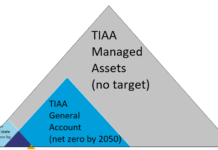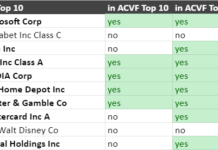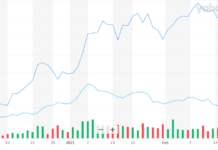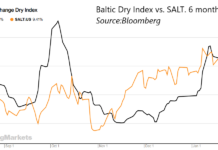My target sector allocation for Green Energy Sectors: How much to put in Solar, Wind, Geothermal, Biomass, Biofuels, Energy Efficiency, Alternative Transport, and enabling technologies such as Smart Grid and Transmission.
In Part I of this series on green energy investing (see also Part II and Part III), I suggested readers "structure your portfolio to reflect the technologies which are actually going to make a difference." This is not the same as investing in a market portfolio, because the market tends to overemphasize the most exciting or familiar (as opposed to the most useful) technologies. This is true for all-too-human venture capitalists, as well as public stock investors.
Checklist
Real advantage in investing comes from doing better analysis than the majority of other investors. By understanding the mistakes or biases of other investors, even small investors are capable of beating the market. For each green energy sector, we should ask ourselves:
- How big a role will this sector play in our energy future?
- How big a role do stocks in the sector play in the market currently?
- Can we buy stocks in companies which will profitably play this role, or is the current industry likely to be disrupted by new entrants and technologies?
- If we can’t invest in the companies which will make a difference, can we invest in enabling technologies?
If the sector’s role will be large, but it plays a smaller role in the current stock market, and we can buy companies today which are likely to play a significant part, then that is a sector which should be prominent in our portfolio.
Assessing Sectors
There are countless studies and reports detailing what our energy future will or should look like. One that I think takes a fairly unbiased view of the available technology is the Gigaton Throwdown. The Gigaton Throwdown looked at technologies’ potential over the next 10 years and asked if they could make a difference in job growth, energy independence, and climate change. Another reference I’ve used in the past is the London Accord, which used modern portfolio theory to assess the effectiveness of many technologies towards mitigating climate change. Because most of these studies focus more on climate change than peak oil, which I consider to be a more immediate threat, I also consider strategies such as mass transit, biking, and road pricing which will help us cope with transportation fuel scarcity. I lump these strategies together as Alternative Transport.
To get an idea of the market’s view of technologies, I obtained a report from BofA Merrill Lynch Global Research. Below is a chart of the market capitalization of the CleanTech sectors they cover:

BofA Merril Lynch does not consider Alternative Transport to be Cleantech, but they do cover most of the other technologies I think are important.
Industry Disruption
In terms of industry disruption, I look at what reports have to say about what is required to achieve scale in the industry. For instance, Geothermal is an extremely economic form of renewable electricity with relatively low environmental impact. In order to achieve scale, Enhanced Geothermal Systems (EGS) will have to be developed, a technology which is not currently being worked on by publicly traded industry players. EGS is unlikely to displace the current set of companies, whose profitability depends on extracting energy from existing resources and owning the mineral rights to those resources, but neither are they likely to be able to take advantage of the opportunities of EGS.
Solar needs technological innovation in Photovoltaics (PV) or Concentrating Photovoltaics (CPV) in order to be cheap enough to be brought to scale quickly, and such innovation is likely to be harmful to many existing industry players working on incremental improvements to current PV. Concentrating Solar Thermal have few established players and is already in the midst of industry technological disruption.
Efficient lighting is in the midst of rapid technological change, but many efficiency technologies, such as geothermal heat pumps have been around for years and have established and profitable players. The insulation industry is even more staid. Advancing energy efficiency requires much more cultural and political change than technological change, so efficiency investments are likely to be very profitable if concern about climate change and energy security drive the needed cultural and political changes.
Putting these sources together, here are my assessments of the four questions I outlined above for each sector.
| Sector | Role | Current Market Cap | Chance of Disruption | Enabling Technologies |
| Wind | Large | Large | Low | Transmission, Smart Grid |
| Solar | Large | Large | High | Transmission, Smart Grid, Storage |
| Efficiency | Very Large | Small | Low or Ongoing | Political and cultural change |
| Plug in Vehicles | Small | Small | High | Smart Grid, Storage |
| Biofuels | Moderate | Small | Moderate to High | Cellulosics, use of Waste Streams |
| Geothermal | Moderate | Small | Req. to achieve scale | Transmission, EGS |
| Alternative Transport | Large | Medium | Low | Political support, Smart Growth |
| Nuclear | Moderate | Moderate | Medium | Safe disposal of radioactive waste |
| Waste | Small | Small | Low | none needed |
| Transmission | Enabling | Medium | Low | n/a |
| Smart Grid | Enabling | Small | Ongoing | n/a |
| Storage | Enabling | Small | Ongoing | n/a |
Of the nine technologies listed, only Efficiency and Alternative Transport (Mass Transit, Biking, etc.) strongly meet my criteria. Among enabling technologies, only Transmission is a well-established industry not prone to disruption.
Smart Grid and Storage technologies also appear frequently as enabling technologies, but both of these industries currently are undergoing rapid technological change, and so investments should be chosen carefully. Finally, Wind, Geothermal, and Waste show current market capitalization of a similar scale to their likely future, while Waste has the added advantage of being an enabling technology for biofuels.
My Target Portfolio

Putting all of this together, the majority of my target portfolio is composed of Energy Efficiency, Alternative Transport (such as mass transit), and Electric Grid sectors. The balance goes to Wind, Geothermal, Electricity Storage, and Biomass/Waste to Energy. In contrast, Modern portfolio Theory would suggest that your Green Energy Portfolio should look very much like the market cap breakdown I obtained from BofA Merrill Lynch Global Research. Yet Modern Portfolio Theory is designed for people who are trying to match the market, not beat it.
If you disagree with my judgments here, you should now have the tools to incorporate your own thoughts on our energy future into your own table, and use the result to allocate your portfolio.
Building Your Portfolio
If you’d like to achieve a portfolio like this yourself, Alternative Energy ETFs can get you about half-way. As I discussed in my recent comparison of Green Energy ETFs, the Powershares Global Progressive Transport Portfolio (PTRP) is a good way to invest in Alternative Transport, and the First Trust Global Wind Energy Index (FAN) serves the same function in the wind sector.
In November, First Trust launched their Nasdaq Clean Edge Smart Grid Infrastructure Index Fund (Nasdaq: GRID). When I analyzed GRID’s portfolio holdings, I found that it was much more of a general grid infrastructure ETF than a narrowly focused Smart Grid ETF, but that it addresses the sector I’m most interested in much better than it would have if it only focused on Smart Grid stocks.
The other sectors still need to be addressed with stock-picking, but stock picking is likely to be more effective (and take less time) if you can focus on a narrower range of companies. I discussed some simple approaches to stock picking in Part I. For those looking at the battery sector, an excellent place to start is John Petersen’s series Battery Investing for Beginners, the popularity of which was the inspiration for the more broadly focused Green Energy Investing for Beginners series you are now reading.
If you have suggestions for further articles in this series, leave a comment.
DISCLOSURE: None.
DISCLAIMER: The information and trades provided here and in the comments are for informational purposes only and are not a solicitation to buy or sell any of these securities. Investing involves substantial risk and you should evaluate your own risk levels before you make any investment. Past results are not an indication of future performance. Please take the time to read the full disclaimer here.









Makes sense to me. Looks like I’m currently underweight the electric grid and alternative transport–although NFYIF is my largest single stock holding. Mil gracias, Tom.
Excellent portfolio. I want improve my stock in energy efficient from batteries/storage.